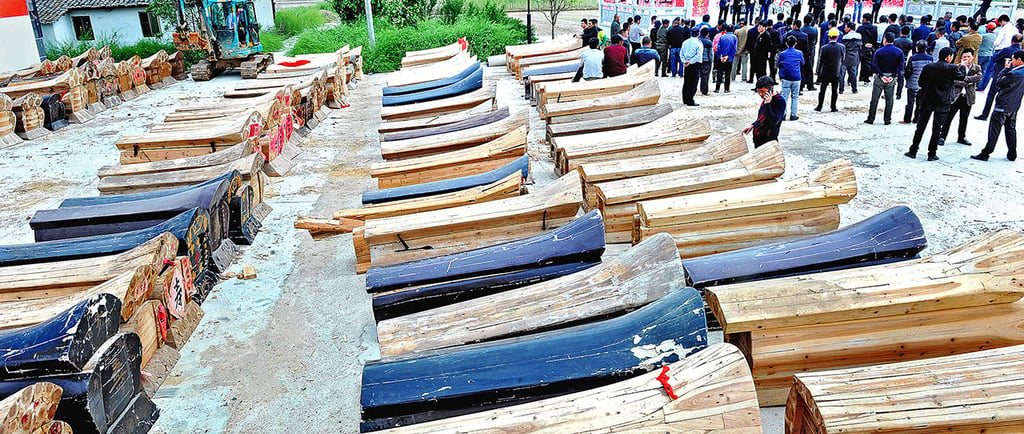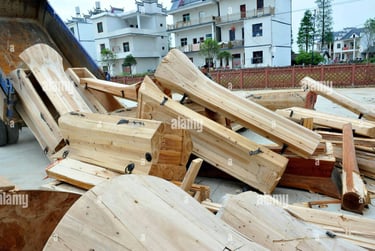China’s Controversial Cremation Policy: Erasing Centuries of Tradition
Discover how China's government-mandated cremation policy, aimed at reducing land use and minimising ancestor worship, is reshaping centuries-old burial traditions and sparking deep unrest among communities.
11/9/20244 min read


China’s Controversial Cremation Policy: Erasing Centuries of Tradition
China's mandatory cremation policy, first introduced in 1985, has since reshaped traditional Chinese funeral practices. This policy gradually enforced across the nation has sparked resistance, altered age-old customs, and led to significant societal impact.
Traditional Chinese Burial Practices and Their Significance
For thousands of years, burial was the predominant method of honouring the dead in China. The Chinese believe that proper burial rituals ensure peace for the departed and demonstrate respect and familial duty, especially through ancestor worship—a core tenet in Confucianism. Confucian philosophy views ancestor worship as an act of virtue, and these beliefs have long influenced Chinese funeral customs. These cultural values persisted even through tumultuous eras, including Mao Zedong's Cultural Revolution, which sought to eliminate many traditional practices. Yet, burial traditions remained resilient.
In 1956, Mao attempted to make cremation the main method for disposing of the dead, calling traditional practices a "feudal superstition." However, this initial push failed to gain widespread acceptance. Ironically, Mao himself was embalmed after his death, with his body preserved in a mausoleum in Beijing. In 1985, the Chinese government formally ordered mandatory cremations in densely populated regions, gradually spreading the policy across the country. This regulation aimed to curb "superstitions" and minimize beliefs in an afterlife, beliefs that were increasingly seen as incompatible with the Communist Party's atheist ideology.
Enforcing Cremation: The Government’s Justification
The government framed mandatory cremation as a solution to population density and land scarcity. In densely populated cities, the policy initially received limited opposition, as many urban residents already used state-run cemeteries and cremation services. However, when the policy expanded into rural areas, where burial traditions are deeply rooted, reactions grew more intense.
The 1985 policy stipulated that "cultivated areas can never be used as burial grounds." This regulation impacted hundreds of millions of rural citizens who held sacred burial rites on their ancestral farmlands. For many rural Chinese, the body serves as a vital connection between generations. Removing these rights threatened not only their customs but also the principles of feng shui, which dictate that the dead must be buried in specific orientations to ensure peace in the afterlife. The government’s messaging, promoting cremation as “civilized and simplified,” clashed with deep-seated beliefs and left many feeling stripped of their heritage.
Public Reactions and Tragic Consequences
As the cremation mandate expanded, it faced considerable resistance. In rural communities, the enforcement of these laws led to tragic outcomes. In the spring of 2014, for instance, local authorities in Anqing city announced that cremation would be mandatory after a specified date. Some elderly residents, faced with the idea of cremation against their wishes, took drastic measures. In one heartbreaking case, a 94-year-old farmer named Mr. Wu reportedly hastened his death, refusing food and water until he passed, to ensure he could be buried traditionally.
Similar stories emerged from other regions. Elderly villagers, unwilling to accept cremation, resorted to suicide as a way to preserve their burial rights. Some drank pesticides, others hanged themselves, and some even protested by lying in their coffins when officials came to confiscate them. Officials, however, often denied these tragic outcomes were related to the policy, asserting instead that the policy was well-received and claiming that citizens appreciated the reduction in funeral costs.
Escalation of Enforcement: 2018 and Beyond
In 2018, government officials in southeastern China were ordered to ease their “zero-burial” policies after videos surfaced showing officials removing coffins from homes and destroying them. These videos, which showed elderly villagers pleading to keep their coffins, caused public outrage. Coffins are often stored in rural homes, symbolising good luck and longevity, and are meticulously crafted, sometimes saved for years. For many, confiscating and destroying these coffins was akin to robbing them of their dignity.
Further reports indicated that authorities were digging up graves, burning bodies without family consent, and even resorting to purchasing bodies from grave robbers to meet cremation quotas. The government’s actions spurred anger, with accusations that officials were profiting from reclaimed burial land.
The Continuing Impact and Modern Protest
Despite widespread discontent, the policy continues to expand into more regions. In Hubei Province, recent protests broke out as villagers blocked highways in opposition to a new regulation mandating cremation by March 2024. Under this regulation, families are required to purchase plots in public cemeteries for storing cremated remains, with annual fees and a twenty-year limit on plots, placing a financial strain on already impoverished communities. Many see these new cemeteries as yet another attack on the cultural practice of ancestor worship, sparking accusations that the policy is more about control than practicality.
Control vs. Tradition: A Government's Approach to Cultural Homogenisation
The Chinese government’s policy on mandatory cremation demonstrates the extent to which an authoritarian regime can enforce conformity among its citizens. By targeting burial and ancestor worship, the Communist Party aims to sever ties with beliefs that, in their view, could challenge state authority. Although the government justifies the policy by pointing to land scarcity and population issues, leaked documents reveal that control and cultural homogenization are likely underlying motives.
Watch Our Full Video
Conclusion
China’s mandatory cremation policy illustrates the conflict between traditional values and government-imposed regulations. As this policy reaches more regions, the tension between individual beliefs and state mandates grows. While the policy may be framed as a necessity in overpopulated urban centers, its implementation across rural areas demonstrates how deep the government’s efforts go to shape cultural practices. The stories of those affected highlight the resilience of cultural heritage and the lengths people will go to uphold these beliefs—even if it means hastening their deaths.



